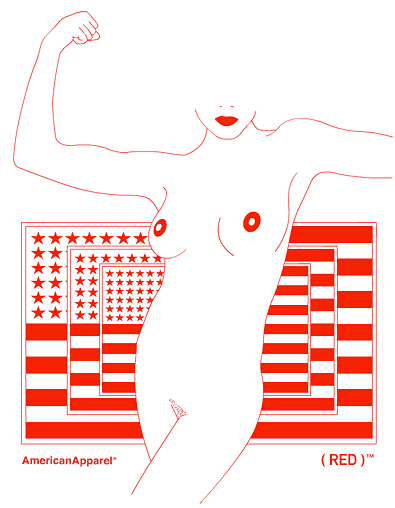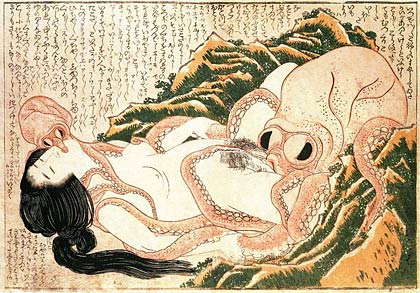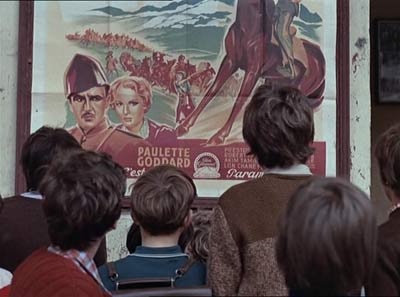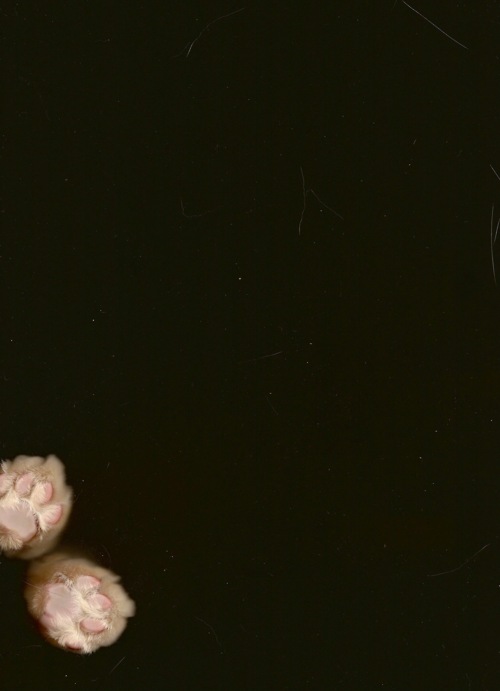
|
|
|

Whether you were happy with life as a teenager could be down to a certain gene, says a new study.
In a large study of American adolescents, teens who carried the long form of the 5HTTLPR locus were more likely to say they were satisfied or very satisified with their lives (at age 18 to 26). People with two long variants were the most cheerful, with short/long carriers in the middle and short/short being the least so. (…)
This study is the latest in a long, long line of attempts to correlate 5HTTLPR with happiness, depression, stress and so on. A few months ago I discussed the history of this busy little gene and covered a meta-analysis of no fewer than 54 papers which claimed that there was indeed a link, with the short allele increasing the risk of depression in response to stressful events.
However many studies failed to find one, and worryingly the three largest studies were all negative which is a classic tell-tale sign of publication bias.
{ Neuroskeptic | Continue reading }
photos { 1. Erica Segovia | 2. Maggie Lochtenberg }
genes, kids, photogs |
October 27th, 2011

According to my teacher, drivers with red cars had to pay higher insurance rates. Apparently this was due to the fact that people in red cars were more likely to speed. I’ve since learned that the relationship between red and speeding is actually a pervasive urban legend. Nevertheless, it piqued my interest in the association between color and behavior. Though red might not be associated with speeding, it has been found to relate to a variety of psychological processes and outcomes in both humans and non-human primates including dominance, competitive sports outcomes, achievement, and sexual attraction.
There is a large body of animal research showing that red coloration is related to testosterone levels and by extension to dominance and aggressive behavior. (…) One experimenter wore a red shirt, and the other wore either a green or blue shirt. Across conditions the monkeys disproportionately stole from the experimenter NOT wearing red – even if the “red” experimenter was female.
{ Psych Your Mind | Continue reading }
animals, colors, psychology |
October 27th, 2011
halves-pairs, photogs, uh oh |
October 27th, 2011

Where are the cool kids: Williamsburg or the East Village?
We’re in Bushwick, actually, and we’re really sick of being overrun by yuppies and undergraduates. A new coffee shop called Cup just opened across the street from my apartment and a 16 oz. cup of drip is $2.75. It’s obscene. (…)
Sartre or Camus?
No, thanks.
{ The Coffin Factory }
experience, new york |
October 26th, 2011

Octopuses are classified within the invertebrates in the mollusk family, and many mollusks, like clams, have no brain.
Only recently have scientists accorded chimpanzees, so closely related to humans we can share blood transfusions, the dignity of having a mind. But now, increasingly, researchers who study octopuses are convinced that these boneless, alien animals—creatures whose ancestors diverged from the lineage that would lead to ours roughly 500 to 700 million years ago—have developed intelligence, emotions, and individual personalities. Their findings are challenging our understanding of consciousness itself. (…)
Another measure of intelligence: you can count neurons. The common octopus has about 130 million of them in its brain. A human has 100 billion. But this is where things get weird. Three-fifths of an octopus’s neurons are not in the brain; they’re in its arms.
“It is as if each arm has a mind of its own,” says Peter Godfrey-Smith, a diver, professor of philosophy at the Graduate Center of the City University of New York, and an admirer of octopuses. For example, researchers who cut off an octopus’s arm (which the octopus can regrow) discovered that not only does the arm crawl away on its own, but if the arm meets a food item, it seizes it—and tries to pass it to where the mouth would be if the arm were still connected to its body.
{ Orion | Continue reading }
artwork { Hokusai, The Dream of the Fisherman’s Wife, 1814 }
animals, brain, science |
October 26th, 2011

By the 1980s, the onset of puberty, if not actual menstruation, had gone into free fall–a change so sudden and pronounced that something more than normal evolution must have been at work. In a landmark 1997 study of 17,000 [US] girls, more than 10% of white girls and an astonishing 37.8% of black girls were showing early breast development by age 8. (…)
Later studies, one in 1998 and another in 2010, included Hispanics and produced similar results. On average, 2 out of every 10 white girls, 3 out of 10 Latinas and 4 out of 10 black girls are showing breast development by age 8.
Obesity, a well-established puberty accelerant, is high on the list of suspects.
{ Time via Overcoming Bias | Continue reading }
photo { Mustafah Abdulaziz }
U.S., health, kids |
October 26th, 2011

When asked to plan ahead and describe the most efficient route between two locations, we apparently visualise connections between highly salient streets, which leads us to formulate a relatively longer route, with fewer turns. This is known as graph-based way-finding.
But asked to actually walk between the same two points, we base our route more on direction, make more turns, take smaller streets, and navigate more efficiently, as ongoing feedback from the unfolding scene reminds us of short-cuts. This incremental approach is known as direction-based wayfinding.
The third mental strategy is brought to bear when we give directions to a stranger, with reference made to the simplest possible route, with the fewest turns and passing the most salient landmarks.
{ BPS | Continue reading }
psychology |
October 26th, 2011
 60 Elvises flee hotel during fire alarm.
60 Elvises flee hotel during fire alarm.
Man spent 30 years eating only roadkill. The conservationist makes owl curries and rat stir fries because he doesn’t like the way farmed animals are treated.
New York couple tries to trademark ‘Occupy Wall St.’ [Thanks Tim]
STD rates are on the rise in Greenwich Village. The number of female gonorrhea diagnoses in the Village has skyrocketed by 57 percent between 2008 and 2010, making it the highest spike in the city.
Doctor Visits Plunge 8% Year-Over Year.
A captive rattlesnake has given birth after five years alone and her offspring carry a male snake’s genes, suggesting she stored sperm before she was caught.
Positive words carry less information than negative words.
Why You Should Keep Your Goals Secret. Making a public commitment to your goals reduces motivation.
Overconfidence pays when the audience knows the least.
People with lots of Facebook friends have denser grey matter in three regions of the brain, a study suggests. More: Amount of Facebook friends is reflected in human brain structure.
Despite the proliferation of social networks, many Americans feel alone and isolated. According to a new study in the Journal of Consumer Research, lonely individuals behave differently in the marketplace than people with strong social networks.
The biggest ever study on the personality of sperm donors has just been published.
Ratings of infant facial attractiveness fail to predict ratings of adult attractiveness.
 ‘Never married’ men still more likely to die from cancer.
‘Never married’ men still more likely to die from cancer.
Are sexualized women complete human beings? Why men and women dehumanize sexually objectified women.
What defines life satisfaction for consumers living in poverty?
Why you can’t individually control your toes.
Why does explaining why a cupcake is delicious make us love it less?
The plant world has evolved numerous ingenious ways to distribute seeds. But one of the least known and least celebrated is raindrop dispersal.
Making water look realistic in computer simulations is devilishly hard. How to simulate an ocean.
Alan Turing and the Origins of Complexity. [PDF]
Distinguishing manipulated stocks via trading network analysis.
Many studies suggest people have a habit of simply ignoring web banners on Internet sites.
“I see street signs, restaurant menus, objects while I’m walking along, and I’m just reversing them all the time.” Duncan is a master palindromist.
America’s highest-rated bridge players are overwhelmingly composed of Wall Street guys. Bridge is a complex card game that fits the analytic side of finance, as poker appeals to instincts.
WikiLeaks’ tsunami of revelations from U.S. government sources last year did not change the world, but it did change WikiLeaks.
 Hulu Plus, the paid subscription offering from the premium video streaming site Hulu, will be available on the Nintendo Wii console and 3DS handheld system by the end of the year.
Hulu Plus, the paid subscription offering from the premium video streaming site Hulu, will be available on the Nintendo Wii console and 3DS handheld system by the end of the year.
How Russian Tycoon Yuri Milner Bought His Way Into Silicon Valley.
Dropbox: The Inside Story Of Tech’s Hottest Startup.
Marketing managers for major orchestras had always assumed that convincing people to give the symphony a try was the key to gaining subscribers. But when they actually studied the numbers, they discovered that getting new people wasn’t the problem.
Edison vs. Westinghouse: A Shocking Rivalry.
The History of 8 Hallucinogens.
6 Laws You’ve Broken Without Even Realizing It.
Never ask a busy person to lunch. Here’s why.
A Videocamera That Captures 360 Degrees of Action.
Kirgiz, Kyrgystan, 2000. More: A Visual Anthropology of the World’s Last Living Nomads.
Mr. T USB drive.
Inside a gremlin.
Inside John Lenon. [John Lennon and Yoko Ono photographed the day before Lennon was assassinated]
That’s me with Matteo outside the Abercrombie and Fitch poster. [via copyranter]
every day the same again |
October 26th, 2011

Sexual infidelity can be costly to members of both the extra-pair and the paired couple. Thus, detecting infidelity risk is potentially adaptive if it aids in avoiding cuckoldry or loss of parental and relationship investment.
Among men, testosterone is inversely related to voice pitch, relationship and offspring investment, and is positively related to the pursuit of short-term relationships, including extra-pair sex.
Among women, estrogen is positively related to voice pitch, attractiveness, and the likelihood of extra-pair involvement.
Although prior work has demonstrated a positive relationship between men‟s testosterone levels and infidelity, this study is the first to investigate attributions of infidelity as a function of sexual dimorphism in male and female voices.
We found that men attributed high infidelity risk to feminized women‟s voices, but not significantly more often than did women. Women attributed high infidelity risk to masculinized men‟s voices at significantly higher rates than did men. These data suggest that voice pitch is used as an indicator of sexual strategy in addition to underlying mate value.
{ Evolutionary Psychology | Continue reading | PDF }
artwork { Raphaelle Peale, Venus Rising from the Sea—A Deception, 1822 }
olfaction, relationships |
October 25th, 2011

Are there really such things as artistic masterworks? That is, do works belong to the artistic canon because critics and museum curators have correctly discerned their merits? (…)
For the sake of this discussion let’s focus on two possible views: the first, call it Humeanism, is the view that when we make evaluative judgements of artworks, we are sensitive to what is good or bad. On this Humean view, the works that form the artistic canon are there for good reason. Over time, critics, curators, and art historians arrive at a consensus about the best works; these works become known as masterworks, are widely reproduced, and prized as highlights of museum collections.
However, a second view—call it scepticism—challenges these claims about the role of value in both artistic judgement and canon formation. A sceptic will point to other factors that can sway critics and curators such as personal or political considerations, or even chance exposure to particular works, arguing that value plays a much less important role than the Humean would lead us to believe. According to such a view, if a minor work had fallen into the right hands, or if a minor painter had had the right connections, the artistic canon might have an entirely different shape.
How is one to determine whether we are sensitive to value when we form judgements about artworks? In a 2003 study, psychologist James Cutting briefly exposed undergraduate psychology students to canonical and lesser-known Impressionist paintings (the lesser-known works exposed four times as often), with the result that after exposure, subjects preferred the lesser-known works more often than did the control group. Cutting took this result to show that canon formation is a result of cultural exposure over time.
{ Experimental Philosophy | Continue reading }
arwtork { Marlene Dumas, Dead Girl, 2002 }
art, ideas |
October 25th, 2011

Something unexpected has happened at Apple, once known as the tech industry’s high-price leader. Over the last several years it began beating rivals on price. (…) Apple’s new pricing strategy is a big change from the 1990s, when consumers regarded Apple as a producer of overpriced tech baubles, unable to compete effectively with its Macintosh family of computers against the far cheaper Windows PCs. (…)
The aggressive pricing, analysts say, reflects Apple’s ability to use its growing manufacturing scale to push down costs for the crucial parts that make up its devices. Apple has also shown a willingness to tap into its huge war chest — $82 billion in cash and marketable securities last quarter — to take big gambles by locking up supplies of parts for years, as it did in 2005 when it struck a five-year, $1.25 billion deal with manufacturers to secure flash memory chips for its iPods and other devices.
By buying up manufacturing capacity ahead of time, Apple forces its competitors to scramble for the parts that are still available, raising costs for their products, analysts say. Apple is the biggest buyer of flash memory chips in the world, according to the research firm iSuppli.
{ NY Times | Continue reading }
I will spend my last dying breath if I need to, and I will spend every penny of Apple’s $40 billion in the bank, to right this wrong,” Jobs said. “I’m going to destroy Android, because it’s a stolen product. I’m willing to go thermonuclear war on this.”
{ Me & Her | Continue reading }
I watched the 60 Minutes interview with Steve Jobs’ biographer last night (video here), and I was aghast at something I learned: After Jobs learned of his pancreatic cancer, he delayed surgery by 9 months.
That decision was met with a massive push back from his friends and family. It was horrifyingly bad judgment. And, it likely cost him his life. He came to realize this towards the end of his life, according to his biographer.
{ Barry Ritholtz | Continue reading }
economics, technology |
October 25th, 2011

Far be it from me to suggest the abolition of sociology departments. After all, I’m the chairman of one.
But even a chairman would need an inhuman capacity for denial to fail to see that:
1. The overwhelming amount of current sociology is simply nonsense–tendentious nonsense at that.
2. Nearly all of the sociology that is not tendentious nonsense is so obvious that one wonders why anyone would see the need to demonstrate it.
{ Steven Goldberg | Continue reading }
ideas |
October 24th, 2011

Rather than being fixed over our lifespan, a person’s IQ can show both significant increases and decreases during their teenage years, new results suggest.
Reported in Nature today, the results reveal that verbal and non-verbal ability, as measured by IQ (Intelligence Quotient) tests, fluctuated over a period of three to four years during adolescence. They also showed that these changes correspond to specific structural changes in brain regions associated with speech and movement.
{ Cosmos | Continue reading }
brain, kids |
October 24th, 2011

We investigated the relationship between creativity, personality, latent inhibition (LI), and psychopathology.
The results suggest that actors and polydrug dependents can be characterized by (a) high scores in the personality dimension psychoticism, (b) high originality during creative idea generation, and (c) decreased LI as compared with the other groups. Correlational analyses moreover revealed significant associations between LI, originality, and psychoticism.
According to our findings, creative people and people suffering from mental disorders appear to share some common personality and cognitive traits.
{ APA PsychNET | Continue reading }
neurosciences |
October 24th, 2011
future, ideas, time |
October 24th, 2011

A Waboba is a ball that bounces on water (wa-ter bo-uncing ba-ll). That makes it kind of unusual since a simple experiment will show that many balls do not bounce on water. And that raises an interesting question–how does the Waboba work?
Today we get an answer from Michael Wright at Brigham Young University in Utah and a few buddies. These guys videoed the way three balls interact with water when bounced.
A Superball, which is solid and so has a relatively small surface area for its mass, burrows deep into the water, even when it hits at a shallow angle. So it does not bounce.
A raquet ball, on the other hand,is hollow and so has a larger surface area ratio to mass ratio. When thrown at a shallow angle, it penetrates only a small distance into the water creating a depression in the surface through which it planes back onto the surface. So it rebounds a little.
The Waboba is hollow but it is also soft. (…) Because it is soft, the ball flattens into disc-shape when it hits the surface and this allows it to aquaplane efficiently across the surface. (…)
Why might this be useful? Wright and co don’t say in their video but the fact that one of the team is with the Naval Undersea Warfare Center in Newport might offer a clue.
{ The Physics arXiv Blog | Continue reading }
artwork { Ellsworth Kelly, Yellow White, 1961 }
Ellsworth Kelly, science, water |
October 24th, 2011

The idea of the ‘hot hand’, where a player who makes several successful shots has a higher chance of making some more, is popular with sports fans and team coaches, but has long been considered a classic example of a cognitive fallacy – an illusion of a ‘streak’ caused by our misinterpretation of naturally varying scoring patterns.
But a new study has hard data to show the hot hand really exists and may turn one of the most widely cited ‘cognitive illusions’ on its head.
{ Mind Hacks | Continue reading }
related { Why do some athletes choke under pressure? }
psychology, sport |
October 24th, 2011
cats, visual design |
October 24th, 2011
ideas, science |
October 24th, 2011

If one could rewind the history of life, would the same species appear with the same sets of traits? Many biologists have argued that evolution depends on too many chance events to be repeatable. But a new study investigating evolution in three groups of microscopic worms, including the strain that survived the 2003 Columbia space shuttle crash, indicates otherwise. When raised in a lab under crowded conditions, all three underwent the same shift in their development by losing basically the same gene. The work suggests that, to some degree, evolution is predictable.
{ Nature | Continue reading }
images { Jesse Richards | Susan Rothenberg }
science, theory |
October 24th, 2011
























